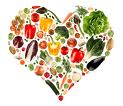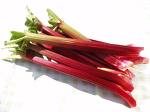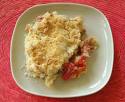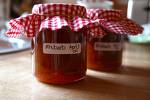Eating a variety of fruit and vegetables will give you plenty of vitamins and mi nerals. For example, many are naturally high in folic acid, vitamin C and potassium. Fruit and vegetables are also a good source of fibre and other substances, such as antioxidants. All these nutrients are important for your health. Fruit and vegetables are generally low fat and low calorie foods. So eating fruit and vegetables instead of foods that are high in fat and added sugars may help you achieve or keep to a healthy weight.
nerals. For example, many are naturally high in folic acid, vitamin C and potassium. Fruit and vegetables are also a good source of fibre and other substances, such as antioxidants. All these nutrients are important for your health. Fruit and vegetables are generally low fat and low calorie foods. So eating fruit and vegetables instead of foods that are high in fat and added sugars may help you achieve or keep to a healthy weight.
Fruit and vegetables can help protect you from diseases such as cancer and heart disease. Try to have at least 5 portions of fruit and vegetables a day. In fact, the more you eat the better! Fresh, frozen, chilled, canned in juice (not syrup), 100% fruit juice, and dried fruit and vegetables all count.
 Check the table below to find out what counts as one portion. How many do you eat a day?
Check the table below to find out what counts as one portion. How many do you eat a day?
If you are not yet eating 5 a day, then build up to this amount (or more!).
Try to choose 5 different fruits and vegetables.
But what is a portion?
| ONE portion = 80g = any of these |
| 1 apple, banana, pear, orange or other similar sized fruit |
| 2 plums or similar sized fruit |
| ½ a grapefruit or avocado |
| 1 slice of large fruit, such as melon or pineapple |
| 3 heaped tablespoons of vegetables (raw, cooked, frozen or tinned) |
| 3 heaped tablespoons of beans and pulses (however much you eat, beans and pulses count as a maximum of one portion a day) |
| 3 heaped tablespoons of fruit salad (fresh or tinned in fruit juice) or stewed fruit |
| 1 heaped tablespoon of dried fruit (such as raisins and apricots) |
| 1 handful of grapes, cherries or berries |
| a dessert bowl of salad |
| a glass (150ml) of fruit juice (however much you drink, fruit juice counts as a maximum of one portion a day) |
Tips: a day’s worth might be: a banana and a glass of fruit juice with breakfast, salad and an apple with lunch, and carrots with your dinner.








